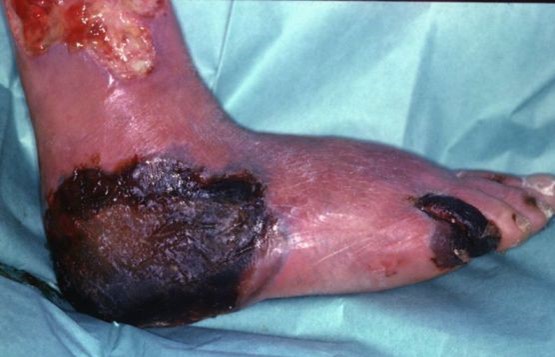Which zone consists of the area where the injury is most severe and deepest?
Hyperemia.
Coagulation.
Stasis.
Necrosis.
The Correct Answer is D
Necrosis. Necrosis is the death of cells or tissue due to disease, injury, or lack of blood supply. In the process of tissue injury, necrosis occurs in the deepest and most severe area of injury.

Choice A, Hyperemia is an increase in blood flow to an area, causing redness and warmth.
Choice B, Coagulation is the process of blood clotting.
Choice C, Stasis is a reduction in blood flow to an area, causing blood to pool and resulting in tissue hypoxia.
Nursing Test Bank
Naxlex Comprehensive Predictor Exams
Related Questions
Correct Answer is A
Explanation
The client takes furosemide with the evening medications. Nocturia, or the need to wake up at night to urinate, can be caused by various factors. In this case, the client's medication, furosemide, is a diuretic that can increase urine output and cause nocturia. The other choices do not explain the cause of the client's nocturia.
Correct Answer is B
Explanation
A decrease in grasp strength. Carpal tunnel syndrome is a condition that occurs when the median nerve, which runs from the forearm into the hand, becomes compressed at the wrist. Common assessment findings include numbness, tingling, and pain in the hand and fingers, weakness in the hand, and a decrease in grasp strength.
Choice A, pain radiating down the dorsal surface of the forearm, is not the correct answer because it is a common symptom of tennis elbow.
Choice C, inability to flex index and middle fingers, is not the correct answer because it is a symptom of trigger finger.
Choice D, tenderness in the affected wrist, is not the correct answer because it is a common symptom of wrist sprains or strains.
Whether you are a student looking to ace your exams or a practicing nurse seeking to enhance your expertise , our nursing education contents will empower you with the confidence and competence to make a difference in the lives of patients and become a respected leader in the healthcare field.
Visit Naxlex, invest in your future and unlock endless possibilities with our unparalleled nursing education contents today
Report Wrong Answer on the Current Question
Do you disagree with the answer? If yes, what is your expected answer? Explain.
Kindly be descriptive with the issue you are facing.
